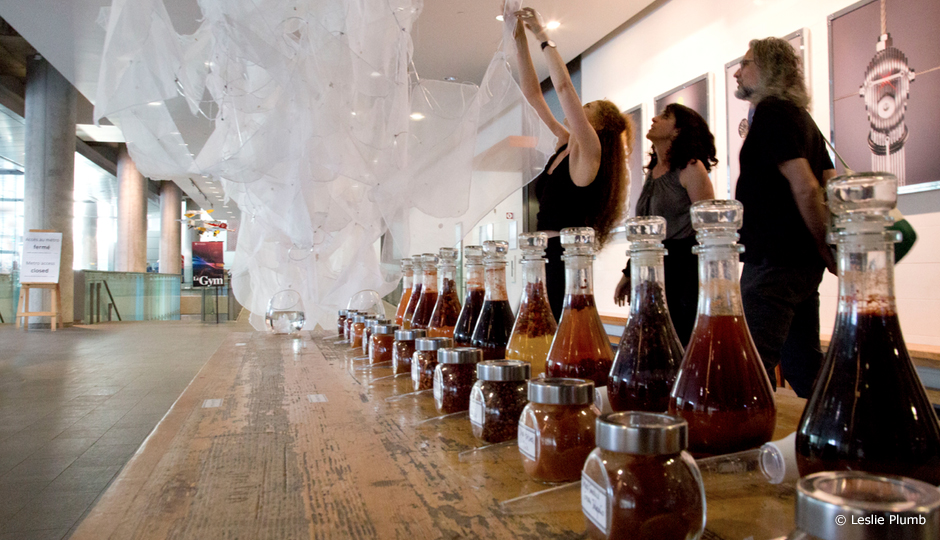We generally consider our senses to be separate from one another. But for people with synaesthaesia, two or more senses are interconnected. For example, some synaesthetes perceive the letters of the alphabet or numbers in colour. Erin Manning, an artist and researcher in the Department of Studio Arts at Concordia University, creates participatory installations to explore the synaesthesia between smell and vision.
Projects such as this build bridges between contemporary artists and the public, while stimulating reflection on artistic and philosophical themes.
Her research-creation project, Slow Colour, examines the interaction between perception, movement and time. The installation consists of pieces of unbleached white silk hanging in space, which will be dyed using dyes created from fragrant spices. The dye will seep into the suspended pieces of fabric through clusters of transparent tubes sewn into the fabric and leak onto large sheets of paper spread out on the floor. Every day, Erin Manning adds another sheet. Each cluster of tubes is dedicated to a colour/smell created using spices from the Americas such as sumac, chilaca pepper and birds eye chili pepper. Each has its own smell and shade of colour, and this colour/smell combination slowly spreads over the fabric, confusing the senses.
Visitors can influence the process by activating the pumps that inject the dye, thereby modifying the artistic production. At the same time, their actions change their perception of the textile work. Over time, the dye gradually transforms the appearance and smell of the silk. After several months, the silk is cut and used to collectively craft garments.
Projects such as this build bridges between contemporary artists and the public, while stimulating reflection on artistic and philosophical themes such as forms of interaction, the creation of meaning through practice and our perception of the world.




